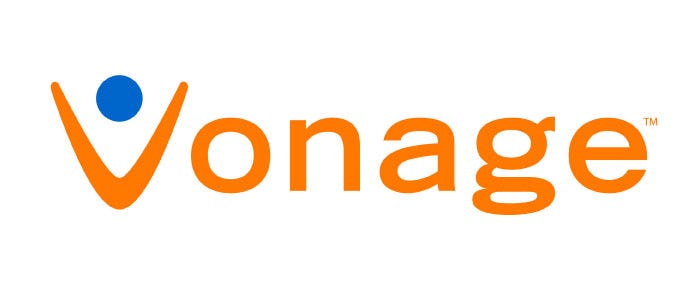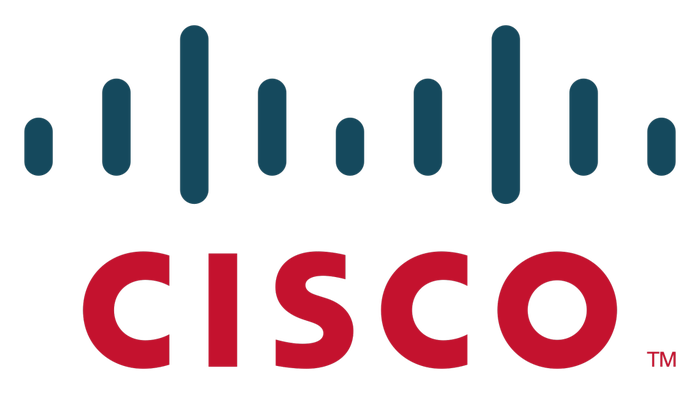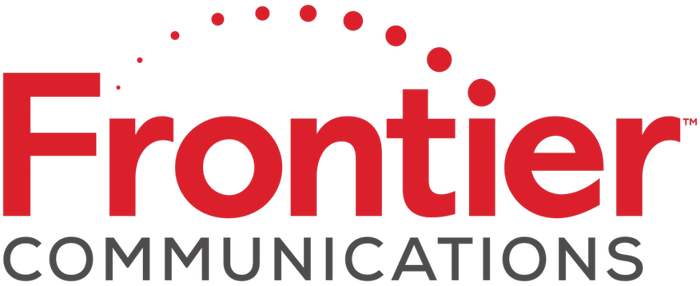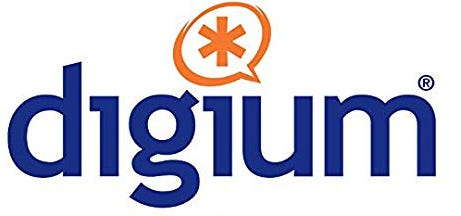The CP List: 20 Top Enterprise Telephony Providers You Should KnowThe CP List: 20 Top Enterprise Telephony Providers You Should Know
There aren't many pure-play phone vendors anymore.

**Editor’s Note: This is the latest in our series of “20 top” provider lists. Our previous lists cover UCaaS, SD-WAN, antivirus software and backup/DR.**
Enterprise telephony providers have had to evolve or face extinction as enterprises have steadily shifted from on-premises, traditional phones to cloud-based options with greater flexibility and efficiency.
The number of traditional desk-phone providers has rapidly declined, so much so that many industry research firms have stopped issuing reports and rankings. Still, enterprise telephony – which includes VoIP and PBX – remains a highly competitive industry with players gaining market share through innovation and efficiency.
Analysts, members of the Channel Partners Editorial Advisory Board and other industry experts shared their views with us on what it takes to succeed in enterprise telephony.

Frost & Sullivan’s Alaa Saayed
Desk phones are still not dead, said Alaa Saayed, an analyst at Frost & Sullivan.
“IP desktop phones, especially open SIP phone devices, are still selling well, specially in hosted/cloud-based telephony environments,” he said. “In spite of this, the software-centric communications and collaboration revolution has been compelling more businesses to shy away from IP desktop devices in favor of USB-enabled endpoints such as professional headsets. While the vast majority of global business users still have a hard phone at their desk, actual usage of business desktop phones has been notably decreasing across the years.”
Growth in PC-based communications, including browser-based and downloaded soft-client interfaces, has been propelling more business to invest in other types of endpoints that are more functional to a software-based conversation, Saayed said. Today, professional headsets are no longer considered accessories, but “intelligent endpoints that can significantly augment a software communications and collaboration experience,” he said.
“Triggered by the ever-growing availability of USB and bluetooth headsets, more businesses have been considering the move to environments without desktop phones,” he said.

Jon Arnold
Jon Arnold, principal analyst at J Arnold & Associates, said all the vendors who are making phones still are doing well with them. Successful providers are “still willing to innovate” and are continuing to innovate because the role of the desk phone has been evolving, he said.
“There are vendors out there who make phones that are just phones, and there’s still a market for that for sure, but the ones that are staying strong in this space are really continuing to innovate, basically looking at what the desk-phone experience needs to be,” he said. “So it’s certainly gotten beyond the purely functional role of [enabling] a voice conversation … for the phones to remain relevant they have to have certainly more intelligence and more support for multiple channels, and features that aren’t just for voice.”
It’s also important for the provider to have a variety of phones to match various end-users’ needs, Arnold said.
“This is also good for the channel because now they can come to a customer and say, ‘We’ve got five different varieties of phones here, and you can mix and match them to your needs,'” he said.
There aren’t many pure-play phone vendors anymore, Arnold said.

WTG’s Julie Dzubay
“For example, Cisco is one of the leading vendors for phones, but it’s a small part of their business,” he said. “It’s not a standalone growth category anymore. Too many things are changing.”
The pace of improving current products and services, along with launching new ones, is faster than it has ever been, said Julie Dzubay, WTG‘s vice president of sales operations and editorial advisory board member.
“Part of this is being driven by global technology influence and small, nimble startup companies,” she said. “In addition, customers have a higher risk tolerance with technology when there is a price gap. Previously, many clients had major requirements for the tried and true ‘household’ brands. With the introduction of new technologies, there is no track record. All of the providers are new to the market for those services, creating a very competitive marketplace.”
Successful and cutting edge aren’t necessarily synonymous, said Alex Hart, 2112 Group’s senior vice president of strategic services.

The 2112 Group’s Alex Hart
“Having a set of products/solutions that are at the bleeding edge of technology, but are complex to implement, lack scalability or cannot be easily supported post-implementation, completely negates whatever technological benefit the solution or provider touts,” he said. “Success comes from being able to solve for the customers need with offerings that are efficient, secure, scalable, feature-rich, cost-effective and also integrate with other third-party collaboration solutions that the customer may already have in place.”
Based on feedback from analysts, industry experts, editorial advisory board members and recent news reports, we’ve compiled a list, in no particular order, of 20 enterprise telephony providers that are making the most of the current competitive landscape and charting success.
 Broadvoice
Broadvoice

Rachel McNeese, founder and president of Richardson Communications, and editorial advisory board member, cited Broadvoice among the best and most successful providers.
A successful enterprise telephony provider is one that is “offering other applications outside of telephony that integrate with their platform, collaboration, SaaS integration, etc.,” she said.
 RingCentral
RingCentral

RingCentral has done a “great job in the SMB and midmarket space,” Hart said. Dzubay also cited RingCentral as a successful provider.
“Their solutions are easy to use and implement, plus offer a significant amount of flexibility in integrating with other cloud-based applications though a strong set of APIs,” Hart said. “Partners that I have spoken to who work with RingCentral have also had very positive commentary.”
(list continues on next page)
 Vonage
Vonage

McNeese cited Vonage as a successful provider. Also, Michael Brandenburg, industry analyst at Frost & Sullivan, said on the service-provider side, Vonage is fully taking advantage of its Nexmo acquisition to deliver CPaaS and API integration.
“The biggest challenge for providers is speed,” he said. “The lead times to develop and deploy services to customers is shrinking. Competition is coming from providers that operate over the top and at ‘web speed,’ i.e. immediate provisioning of communications services, and customers (even large enterprises) are coming to expect that from all of their providers.”
 Five9
Five9

Dzubay cited Five9 among the most successful solution providers. Earlier this year, the provider was selected by a national food service delivery company to serve as the foundation for its contact center of 600 agents. Five9 completed the installation in multiple U.S. and European locations in one week from the date of purchase.
(list continues on next page)
 Mitel
Mitel

Mitel is another “strong player” whose MiCloud offering presents a “great alternative,” Hart said. In April, Mitel announced it is going private by agreeing to sell to an investor group led by affiliates of Searchlight Capital Partners.
“They have been focusing on becoming a cloud-first company and the investments they have made in both acquisitions (ShoreTel) and expanding senior leadership in both the sales and channel organization bode well for customers and partners alike,” he said.
 Jive
Jive

Dzubay said Jive is among providers that have “piqued the interest of the channel with evolutions to their solutions and channel programs.” Jive has been acquired by LogMeIn in a deal worth up to $357 million.
LogMeIn said the deal accelerates its overall unified communications and collaboration (UCC) strategy and bolsters its collaboration portfolio, bringing together services like GoToMeeting, GoToWebinar, OpenVoice and join.me with Jive’s UC products.
(list continues on next page)
 8×8
8×8

Hart has been “very impressed” with what 8X8 has been doing with its Virtual Office solution. Dzubay also ranks it among the most successful providers.
“The fact that they also have made the effort to get certifications around (the) Health Insurance Portability and Accountability Act (HIPAA), Federal Information Security Management Act (FISMA) and Payment Card Industry (PCI) [security standards] speaks to their commitment to the enterprise customers and vertical markets,” Hart said.
 Avaya
Avaya

Brandenburg said he is “impressed” with Avaya‘s “hybrid strategy.” Avaya has more than 26 million IP Office lines installed globally.
“For me, the most effective solutions out there are the ones that bring the most flexibility to their customers,” he said. “While the hype cycle suggests that all telephony will be in the cloud (UCaaS), the reality is that most businesses simply cannot flip a switch and move to the cloud. Hybrid offerings that allow customers to keep one foot on-premise[s] and transition to the cloud at their own pace, or in cases never fully move, have the right strategy, in my view.”
(list continues on next page)
 Megaport
Megaport

Dzubay said partners are having success with lesser-known Megaport and its solution. The Australia-based company’s global platform allows customers to connect their network to other services across the Megaport network. Services can be directly controlled by customers via mobile devices, their computer or the company’s open API.
 Cisco
Cisco

Brandenburg said he is “impressed” with Cisco‘s “hybrid strategy.” Hart also cited Cisco for its “massive investments in the UC space.”
“Its UC platforms form the backbone of several large market player offerings,” Hart said. ” If you look at Cisco, as an example, three of their acquisitions in the past year – Accompany, Broadsoft and Mindmeld – are all targeted to further bolster their UC offerings. That, along with the partnerships the have developed with the large carriers (AT&T, Verizon) who use HCS platform as the backbone for many of their offerings, makes them a serious force in the space.”
(list continues on next page)
 Verizon
Verizon

Hart cites Verizon among successful providers for its One Talk solution, in which the mobile phone and desk phone share a single identity. The advent of 5G could make that a real player, especially given integration with Verizon’s wide portfolio of products,” he said.
“The idea of ‘handoffs’ between devices; in other words, the ability to seamlessly transition from office to mobile to any other communication platform (PC, tablet, etc.), to me is a really cool paradigm that I see companies are exploring,” he said.
 Dialpad
Dialpad

Dialpad is an “interesting up-and-coming player,” Hart said. In May, the company acquired TalkIQ to bring voice-driven artificial intelligence (AI) to business communications.
“(Dialpad’s) mission is to ‘kill the desk phone’ by offering a platform that offers voice, video, messaging across all of your existing devices,” Hart said. “Its native integration with Microsoft Office 365, Google’s GSuite, Zendesk and Salesforce, plus the fact that it plays so well with BYOB, make it a very compelling choice in the SMB space.”
(list continues on next page)
 Polycom
Polycom

Arnold cited Polycom, which is being acquired by Plantronics, for its device as a service, in which users lease phones, allowing them to always have the latest version.
“So like a car, you get tired of it after two years, and you swap it out and get a new one,” he said. “So they’re trying to make the process of buying phones and using them easier and easier so you don’t have to lay out a lot of money, and that way you can always have the current edition. This is another way they become leading-edge.”
(list continues on next page)
 Grandstream
Grandstream

Grandstream manufactures IP voice and video communications equipment, video surveillance, gateways and analog telephone adapters, and Asterisk-based IP-PBX appliances. It serves SMBs and enterprises.
“One of the areas that creates a successful cutting-edge provider is their go-to-market strategy for new technology,” Dzubay said. “Historically we have seen the providers struggle with rolling out a new technology that competes or cannibalizes one of their older technologies. A provider’s ability to communicate in an effective way to migrate or incorporate a new technology with previous offerings, in addition to prospecting and selling to new customers, identifies a successful enterprise technology provider.”
(list continues on next page)
 AT&T
AT&T

AT&T is among the providers having to “reinvent themselves and their programs to remain competitive in this environment,” Dzubay said.
“We are at a tipping point in the enterprise telephony market, and in my opinion, defining success in the enterprise communications space will be based on how well a provider is able to adapt to the needs of their customers,” Brandenburg said. “Digital-transformation projects are having a positive impact on businesses of all shapes and sizes, and communications is the ‘low hanging fruit’ in terms of rethinking and streamlining business processes. Providers that can quickly integrate embedded communications (APIs and CPaaS for example) into their portfolios will differentiate themselves in the market.”
(list continues on next page)
 Frontier
Frontier

Frontier Communications is among providers that are “racing to launch channel friendly programs and introduce leading edge digital transformation offerings,” Dzubay said.
“If the presales process is easy and without conflict, the installation process is dependable and delivers to the customer’s expectation, and the life-cycle management of the client creates a positive customer experience, the channel views the solution as effective,” she said. “When there are issues with either presales, installation or life cycle, the channel will look for an alternate solution that meets all of their needs.”
(list continues on next page)
 Colt
Colt

The shift to a global economy continues to increase WTG’s reliance on international providers like Colt Technology Services, Duzbay said. This month, the company announced the launch of its U.S. network, connecting multinational enterprises and financial firms to Europe and Asia.
“In my estimation, how well a particular provider competes truly depends on how their solutions align to their targeted customer base,” Hart said. “There is huge opportunity in the midmarket and SMB for smaller, more agile players and for the solutions they provide.”
(list continues on next page)
 Digium
Digium

Digium provides Asterisk software, telephony hardware, and on-premises and hosted Switchvox business phone systems that deliver enterprise-class UC and UCaaS offerings. In February, it announced its A-Series IP phones, a line of affordable desk phones for Asterisk-based systems.
(list continues on next page)
 Alcatel-Lucent
Alcatel-Lucent

Alcatel-Lucent Enterprise (ALE) provides networking, communications and services to more than 830,000 customers globally. The company is listed among the major key players in the global enterprise network communications equipment market by Future Industry Insight.
“I think telephony, as classically stated, is one part of an overall solution,” Hart said. “We are In a world where the customer is looking for increases in productivity and efficiency while also looking to decrease costs. An effective solution is one that addresses those three needs while doing so in a secure, scalable and easy to implement/adopt fashion.”
(list continues on next page)
 Airtel
Airtel

Airtel, India’s largest telecommunications service provider, is another international provider that increasingly is relied upon with the shift to a global economy, Duzbay said. The company had more than 413 million customers across its operations at the end of March.
Read more about:
AgentsAbout the Author
You May Also Like


